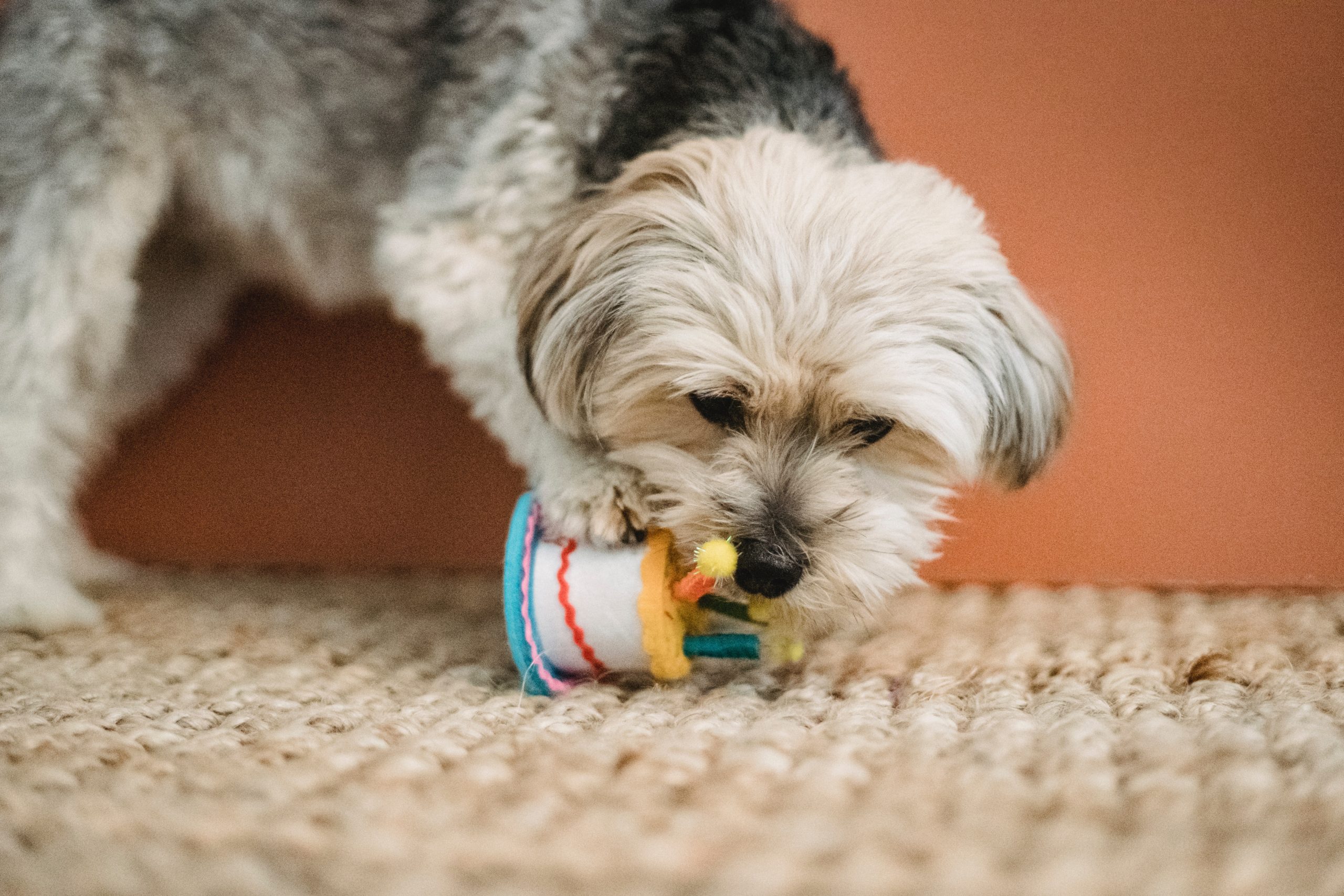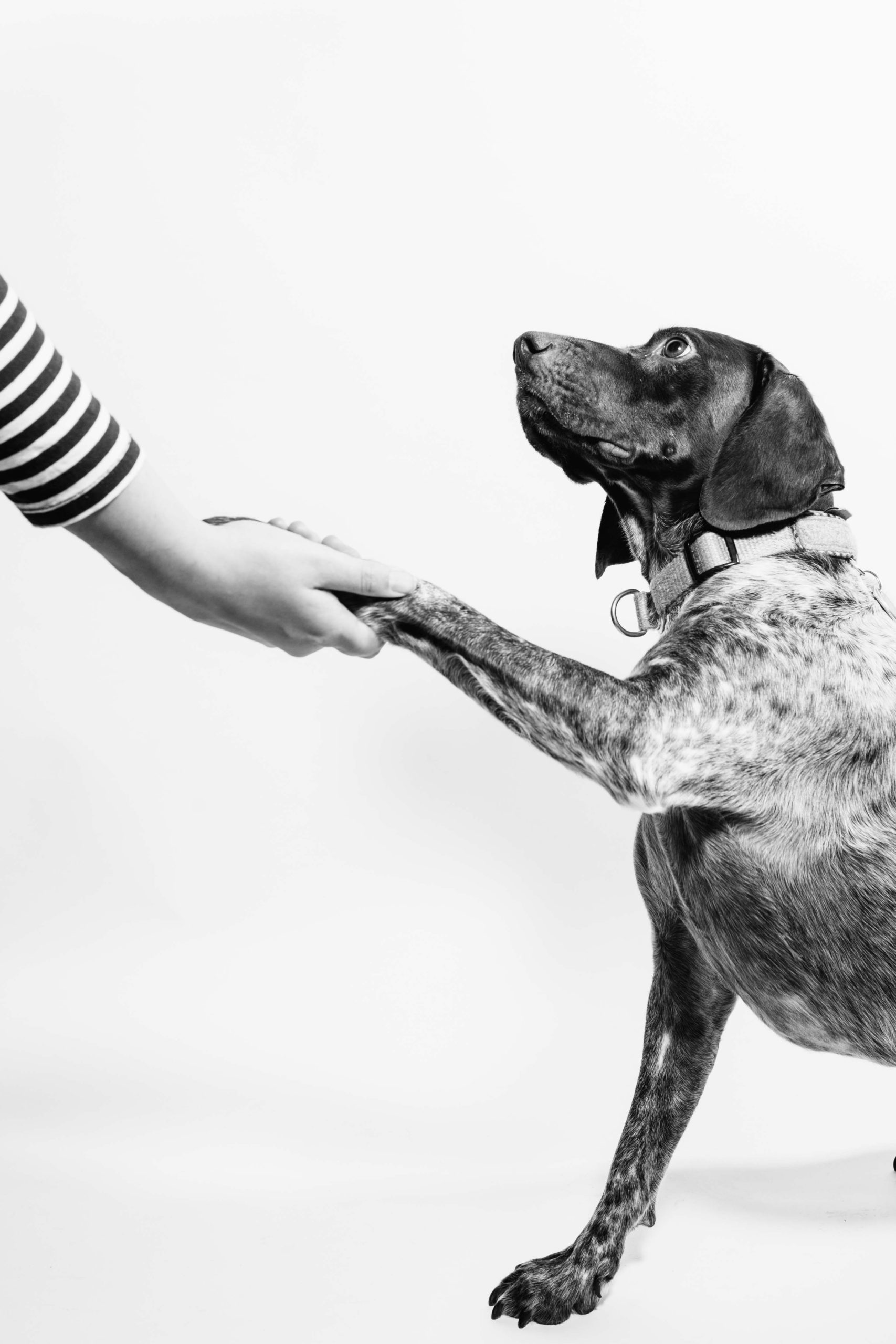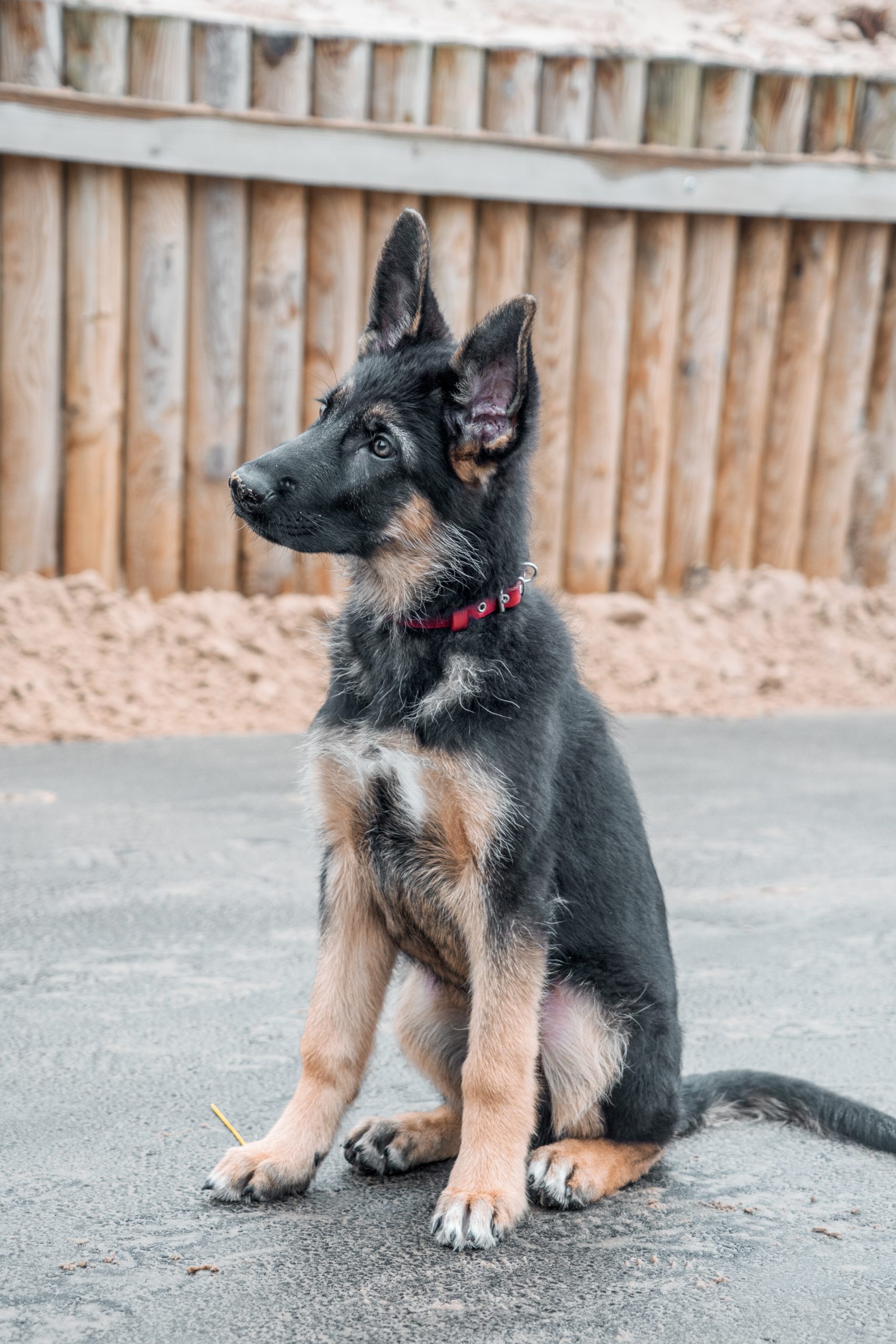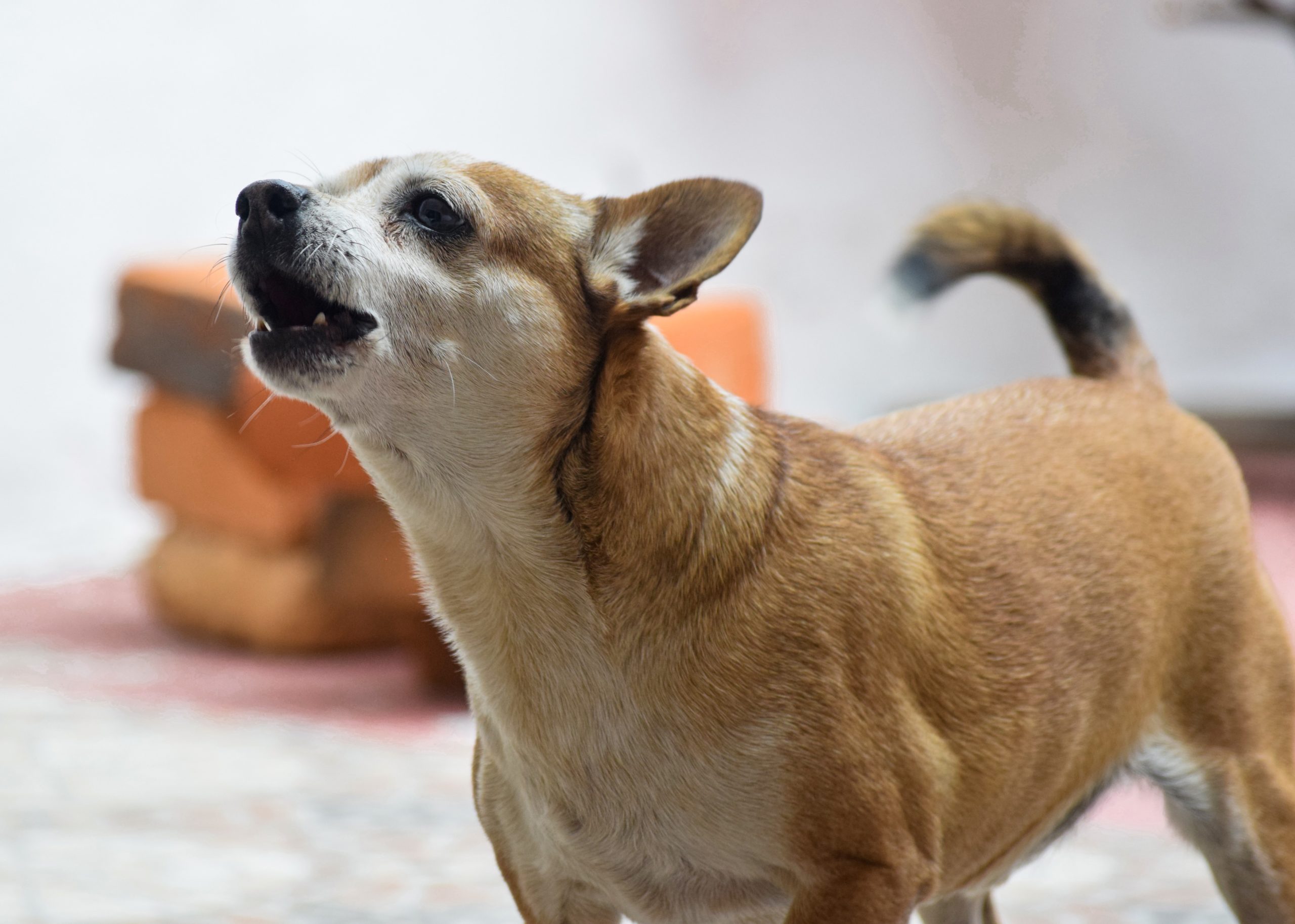Just like humans, our canine companions need mental stimulation and exercise to stay happy, healthy, and engaged in their daily lives. Dog brain games offer the perfect solution for pet owners looking to provide their furry friends with fun challenges that encourage problem-solving skills and keep boredom at bay.
Whether your dog is young or old, an experienced trickster or a newbie pup eager to learn, these 10 exciting brain games are sure to captivate their attention and enrich their minds.
Why Brain Games Are Essential For Dogs
Brain games are essential for dogs because they provide mental stimulation and enrichment, physical exercise, improved behavior and training, and a strengthened bond with their owners.
Mental Stimulation And Enrichment
Mental stimulation and enrichment are essential components of a dog’s overall well-being, much like physical exercise. Engaging your dog in brain games helps to challenge their problem-solving skills, keeping them mentally sharp and healthy throughout their lives.
A prime example of mental enrichment is teaching your dog scent work, which taps into their natural instincts to hunt and forage. This type of activity not only builds cognitive function but also strengthens confidence in timid dogs when they successfully discover hidden treats or scents.
Physical Exercise And Health
In addition to mental stimulation, brain games are also important for a dog’s physical health. Many of these games involve movement, which can provide an excellent form of exercise and help prevent obesity and other health issues.
For example, obstacle courses and agility training require dogs to jump, climb, and weave through various obstacles that can improve their balance, coordination, and overall fitness.
Regular exercise is especially crucial for larger breeds or active dogs who need plenty of space to run around. Brain games offer a great way to combine both mental stimulation and physical activity in one fun package.
Plus, the bonding experience between you and your furry friend while engaging in these activities will only strengthen your relationship further.
Improved Behavior And Training
Brain games for dogs not only provide mental stimulation and enrichment but can also improve behavior and training. Dogs who are mentally stimulated through brain games tend to be calmer, less anxious, and more content.
Moreover, engaging your dog in problem-solving activities helps them become better learners. These games encourage them to use their innate intelligence, creativity, and critical thinking skills.
For example, playing hide-and-seek with your dog teaches them impulse control and patience while reinforcing obedience commands such as “stay” or “come.” Incorporating obstacles into their playtime strengthens balance and coordination while boosting confidence levels.
Strengthened Bond With Owners
Playing brain games with your dog is not only beneficial for their physical and mental health, but it can also strengthen the bond between you and your furry companion. Brain games provide an opportunity for quality time together, as well as a chance to learn and communicate with one another.
For example, teaching your dog a new trick or challenging them with an obstacle course requires patience and positive reinforcement. This process allows both owner and pet to work together towards a common goal, building teamwork skills while deepening the bond between them.
It is important to remember that regular playtime strengthens this relationship over time through shared experiences.
Popular Types Of Brain Games For Dogs
There are many popular brain games for dogs, including puzzle toys and treat dispensers, hide-and-seek and scent games, agility training and obedience drills.
Puzzle Toys And Treat Dispensers
Puzzle toys and treat dispensers are excellent brain games for dogs. These games provide a fun and engaging way for dogs to challenge their minds while receiving a reward. Here are some popular types of puzzle toys and treat dispensers:
- Stuffed Kongs: Fill a Kong toy with your dog’s favorite treats or peanut butter, freeze it, and give it to your dog. This game will keep your dog busy for hours as they try to lick out the contents.
- Interactive Puzzle Toys: These toys come in different shapes and sizes and require different levels of difficulty to access the treat inside. They can be puzzles that need to be solved like mazes or ones that require pulling levers or pushing buttons.
- Snuffle Mats: A snuffle mat is a textured mat with small holes where you can hide treats. Your dog has to use their nose to find the hidden treats, providing both mental stimulation and sensory enrichment.
- Treat Dispensers: These come in various shapes and sizes, but they all dispense treats as the dog plays with them. Some can be adjusted to make it more challenging.
Using puzzle toys and treat dispensers regularly will help improve your dog’s cognitive function, relieve boredom, reduce anxiety, and provide a healthy outlet for their energy.
Hide-and-Seek And Scent Games
Hide-and-Seek and Scent Games are excellent brain games for dogs that provide mental stimulation and physical exercise. Dogs love to use their sense of smell, and these games allow them to use it in a fun way. Here are some ideas:
- Hide and Seek: Teach your dog the “stay” command, then go hide somewhere in the house or yard. Call out their name, and let them come find you. Praise them when they do. You can make this game progressively harder by hiding in more challenging places, like behind doors or under blankets.
- Find the Treats: Hide your dog’s favorite treats around the house or yard, then watch as they sniff out each one. Start with easy-to-find spots and work up to more difficult locations. This game will keep your dog entertained for a while.
- Scent Work: Buy a scent kit or make your own by placing a treat or toy in a box with holes cut out for smelling. Train your dog to identify the scent by having them sniff it out of several boxes until they find the one containing the object.
Remember to adjust these games based on age and ability level, using positive reinforcement techniques while ensuring safety and supervision at all times. Brain games like Hide-and-Seek and Scent Games improve behavior, strengthen bonds with owners, and provide vital mental stimulation for dogs, keeping them sharp both mentally and physically healthy.
Agility Training And Obedience Drills
Agility training and obedience drills are great ways to give your dog a mental workout while also improving their physical health. Here are some benefits and ideas for incorporating these activities into your routine:
- Agility training can help improve coordination, balance, and overall fitness. Set up a simple obstacle course using things like cones, jumps, and tunnels. Guide your dog through the course with treats or toys, gradually increasing the difficulty level over time.
- Obedience drills involve practicing basic commands like sit, stay, come, and heel. These exercises help keep your dog’s mind sharp while reinforcing good behavior. Make it fun by incorporating rewards like treats or playtime.
- You can also combine agility and obedience training by setting up an obstacle course that requires your dog to follow specific commands at each station.
- Mix things up by changing the layout of the course or adding new challenges like jumping over hurdles or crawling under objects.
- Keep safety in mind when doing agility training. Make sure all equipment is securely set up and that your dog is properly trained before attempting more advanced maneuvers.
By incorporating agility training and obedience drills into your routine, you’ll provide a fun challenge for your dog while also strengthening your bond through positive reinforcement.
Creative DIY Dog Brain Game Ideas
Discover how you can easily create homemade treat dispensers and puzzle toys, obstacle courses, and sensory activities that will provide your furry friend with hours of fun and much-needed mental stimulation.
Homemade Treat Dispensers And Puzzle Toys
Brain games don’t have to be expensive. In fact, you can easily make some homemade treat dispensers and puzzle toys right at home! Here are some ideas:
- DIY Treat Dispenser – Take an old plastic bottle and cut a small hole in it. Fill it with your dog’s favorite treats, and let them figure out how to get the treats out by rolling the bottle around.
- Muffin Tin Puzzle – Place treats in each cup of a muffin tin, then cover each cup with a tennis ball. Your dog will need to figure out how to remove the balls to get to the treats.
- Tug-A-Jug – Fill a plastic jug with kibble or small treats, then tie it up securely with a rope or cord. Your dog will have fun tugging on the rope and trying to get the treats out.
- Frozen Kong – Fill a Kong toy with peanut butter or wet dog food, then freeze it overnight. This will provide your dog with a yummy challenge that will last for hours.
- Cardboard Box Hide-and-Seek – Cut holes in a cardboard box and hide treats inside, then let your dog “hunt” for them by sniffing around the box.
By making these DIY brain games at home, you can save money while still providing your furry friend with plenty of mental stimulation and enrichment. Plus, you can customize the games based on your dog’s individual preferences and skill level!
Obstacle Courses And Trick Training
Obstacle courses and trick training are fantastic ways to keep your dog mentally stimulated and physically fit. Here are some ideas to get started:
- Set up an indoor or outdoor obstacle course using household items like chairs, blankets, and boxes. Teach your dog to jump over, crawl under, and weave through the obstacles.
- Use simple commands like “sit,” “stay,” and “come” as foundations for teaching more advanced tricks like “roll over,” “shake,” and “play dead.”
- Incorporate props like hula hoops or agility tunnels into your obstacle course to add variety.
- Practice trick training during your daily walks by having your dog stop, sit, or heel on command at various intervals.
- Make sure to use positive reinforcement, treats, and plenty of praise when training your dog new tricks or completing an obstacle course successfully.
By incorporating obstacle courses and trick training into your dog’s routine, you’ll not only provide them with mental stimulation but build a stronger bond with them as well. So go ahead and have some fun with Fido!
DIY Scent-Based Games And Sensory Activities
Dogs have an incredible sense of smell and incorporating scent-based games into their routine can be a great way to stimulate their minds and provide enrichment. Here are some DIY scent-based games and sensory activities that you can try with your furry friend:
- Scented Hide-and-Seek: Hide treats around the house or yard for your dog to find using their nose. Start with easy hiding spots and gradually increase difficulty.
- DIY Snuffle Mat: Create a snuffle mat by tying strips of fleece or other fabric to a sturdy base. Hide kibble or treats within the strips for your dog to sniff out.
- Sensory Bottles: Fill empty water bottles with different scents like dried herbs, spices, or essential oils, then let your dog explore them by sniffing and rolling the bottles around.
- Frozen Scent Trail: Freeze a mix of broth, water, and scented items like chicken or beef in ice cube trays. Lay the frozen cubes in a trail for your pup to follow using their nose.
- Homemade Tracking Course: Create a tracking course using natural materials like leaves, twigs, and rocks, placing scented objects at different points on the course for your dog to follow.
These activities provide mental stimulation while also tapping into your dog’s natural instincts and senses. By engaging in these games regularly, you’ll help keep them sharp and happy!
Tips For Playing Brain Games With Your Dog
Use positive reinforcement and proper training techniques to avoid any frustration or aggression, adjust games according to your dog’s age and ability, and ensure their safety and supervision during playtime.
Adjusting Games For Different Ages And Abilities
It’s important to make sure that the brain games you choose for your dog are suitable for their age and abilities. Puppies, for example, may not have as much problem-solving experience as adult dogs and might need simpler puzzles or scavenger hunts with treats hidden in plain sight.
To adjust a game for a younger or older dog, start by choosing an appropriate level of difficulty. Avoid overwhelming puppies or frustrating senior dogs by selecting activities that challenge them without being too difficult.
You can also modify existing games to better suit your pet’s abilities; use larger puzzle pieces or slower-moving toys if your dog is struggling to keep up.
Positive Reinforcement And Proper Training Techniques
To ensure that your dog enjoys brain games and stays engaged, it’s important to use positive reinforcement. This refers to rewarding desirable behavior, such as solving a puzzle or completing an agility course, with treats, praise, or playtime.
It’s equally essential to use proper training techniques when playing brain games with your dog. These techniques include ensuring that the game is age-appropriate and safe for your pet and using consistent commands when teaching new skills.
Moreover, remember that different breeds have unique personalities and learning abilities so tailor their game experience accordingly by keeping in mind their cognitive function level.
Ensuring Safety And Supervision
It’s important to ensure safety and supervision when playing brain games with your dog. Always supervise your furry friend while they are engaged in any sort of activity, especially those involving toys or treats.
Make sure the toys you provide are sturdy and safe for your dog to use without causing harm.
Additionally, always adjust the difficulty level of brain games based on your dog’s age and abilities. Younger puppies may not have fully developed problem-solving skills yet, so start them off with easier games and gradually increase the challenge as they grow older and more experienced.
And always remember to use positive reinforcement techniques during training sessions instead of punishment-based approaches; this will help keep your dog motivated and enthusiastic about learning new things! Some examples of these positive reinforcements include treats, playtime, or verbal praise.
Conclusion
Dog brain games are a fun and effective way to keep your furry friend mentally sharp and healthy. From interactive toys to DIY activities, there are plenty of options available for all ages and abilities.
These games provide physical exercise, improved behavior, and strengthened bonds between dogs and their owners. By incorporating mental stimulation into your dog’s daily routine, you can help them live happier, healthier lives.
FAQs:
1. What are dog brain games and how do they work?
Dog brain games are puzzles, toys or activities that stimulate a dog’s cognitive abilities. They usually involve problem-solving, memory tasks, or challenges that encourage dogs to use their senses in new ways. These games can help improve a dog’s mental health and prevent boredom.
2. How often should I play brain games with my dog?
It is important to incorporate brain games into your dog’s routine on a regular basis to maintain cognitive function and stave off boredom. A few sessions per week lasting between 10-15 minutes each can be beneficial for most dogs.
3. Are there any specific breeds of dogs that benefit more from brain games?
All dogs can benefit from mental stimulation provided by brain games but some breeds that were historically bred for working purposes such as Border Collies, German Shepherds, Poodles and Retrievers may have an even greater inclination towards these activities.
4. Do I have to buy expensive equipment or toys for the activities or are there simple DIY options?
There are various low-cost DIY options available online like treat puzzles made out of cardboard boxes or muffin tins filled with tennis balls instead of treats etc., however depending upon your preferences you could consider investing in store-bought items like puzzle feeders which allow pets solve problems in exchange for food rewards where structural quality would be high given its regular usage over time by pets especially if small parts could come loose posing danger on ingesting them accidentally while playing around with it during unsupervised times..



